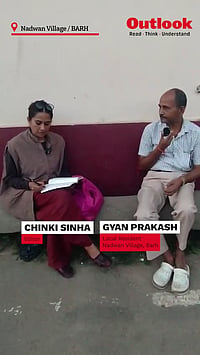Five Online News Sites You Must Visit
- Slate: Created in 1996, it is one of the pioneers of avant-garde web-only journalism and has even spawned a French version in 2009
- ProPublica: A website that specialises in investigative journalism and co-publishes it with various print outlets. Won a Pulitzer for investigative reporting in 2010.
- Salon: Picked by TIME as the website of the year in 1996, Salon.com promotes itself as a smart tabloid
- Christian Science Monitor: An iconic US national daily that went online in April 2009 to cut losses and became a weekly in print
- US News and World Report: Once a weekly in the top league, along with TIME and Newsweek, but since November 2008 has relocated to the web with a monthly magazine in print.
***
Journalists and media owners are facing a daily dilemma as they seek to engage with the future, but cannot—and, in the owners’ case, dare not—disentangle themselves from the past. In this lengthy period of transition from print to screen, journalists find it increasingly frustrating to feed two platforms as they provide editorial copy for both newsprint and online editions.
For owners, the problem is still more acute. At a time of falling print sales and advertising revenue, how do they maintain profitability while allocating the necessary funds to invest in the rapidly developing tools created by digital technology innovators? The concerns of both journalists and publishers centre on what both acknowledge to be critical: how will journalism be funded once print dies?
I have hitched my wagon to the digital revolution. I am convinced that we are on our way towards a participatory, interconnected, linked journalism. I foresee the end of top-down journalism, in which we tell the people what they should read, see and hear, and its replacement by bottom-up journalism, in which the people formerly known as the audience play an active role in news-gathering. I am eager to consign to the dustbin of history the undemocratic vertical relationship between us, the secular priests known as journalists, and the people we serve. In its place will be a horizontal relationship, with citizens and professional journalists working together for the good of society. I envisage a journalism of the community, for the community, by the community.
In other words, I don’t see the adoption of new media technology in purely mechanical terms. We are not changing the delivery platforms for journalism. We are about to transform the act of journalism itself. But the very real and present danger to that idealistic vision is the failure to build a strong bridge from the old to the new. I fear that we are therefore putting in jeopardy a historic opportunity to shape a coherent journalistic landscape for the future.
What worries me most is that too few people, including those who share a vision of a coming golden age, appear to be untroubled by the problems we now face. Unlike many of them, I am deeply concerned by this increasingly bloody period of transition because we are losing journalists with valuable skills and, at the same time, failing to forge a meaningful online strategy that melds the best of “old” mainstream journalism with the emerging “new” journalism.
Old media is on its knees and, in the process, is destroying journalism. Its owners and managers, confronted with crisis, have chosen to dispense with the people who produce words—the information-seeking, news-gathering, story-writing, headline-composing, photograph-taking staff. I readily accept the reality of an economic crisis. The newspaper business model in Britain, the United States and many European countries, has been wrecked. Owners have reacted by indulging in an orgy of cost-cutting and have viewed digital technology as a convenient way to save money rather than to embrace its power to advance towards a new form of journalism. In short, they have subverted a crucial technological breakthrough for their own commercial ends.
I concede that there are exceptions. Damning every media owner and manager would be wrong because there are newspaper groups, along with the individuals who guide them, who do envision a radical new journalistic activity and who are genuinely trying to practise what the revolutionaries preach. The vast majority, however, do nothing more than pay lip service to a brave new world. They pretend they are moving onwards and upwards by inelegantly spinning every tranche of editorial cuts with jargon-loaded announcements about their enthusiastic engagement with a dynamic new form of publishing.
Publishers still tend to operate within a media paradigm constructed in the 19th century, one built on the business logic of maximising profits through advertising revenue. That is understandable because it was a commercial and editorial model that stood them in good stead for 150 years. So it’s unsurprising that they should seek ways of sustaining it. However, the consequences for journalism are truly terrifying. Through cost-cutting, we are losing the skilled, experienced and dedicated staff who have been the backbone of news-gathering and news processing.
I made a mistake five years ago, while in the first throes of cheering the digital advance, of advocating the reduction in editorial jobs. It was a reasonable argument at the time and some cost-cutting was justified. There were too many underused print works. Top-heavy staffs needed pruning. Editorial demarcation lines needed to be smashed. Why shouldn’t reporters take pictures and shoot video? Why did we need so many production employees? But publishers got carried away and have taken the cuts to unreasonable limits. The success of the cost-savings—as publishers like to refer to cuts—went to their heads. It became the only game in town. Cuts begat cuts. Publishers jumped at the chance to reduce staffs still further by outsourcing a range of tasks.
This editorial sabotage has occurred against the background of increased pressure on journalists as they satisfy the demands of providing copy for print and online. There is precious little synergy between them despite the building of work structures that enable editorial copy to appear as smoothly as possible on both. Leading British newspapers, such as the Financial Times, the Guardian and the Daily Telegraph, have performed wonders by providing 24-hour news coverage in which their journalists produce print copy, online text, video and audio material, and mobile phone alerts. But, with the greatest of respect to all those newspaper journalists who are making valiant online efforts, almost all of it is old media journalism masquerading as new media journalism.
Mainstream journalists are not engaging with their audience. To allow online users to comment is all very well, but if the originator of the article merely observes readers’ contributions (clearly, in many cases, they don’t even bother to scan the comment threads under their online copy), then it is a bogus exercise.
What we face is a looming crisis for journalism. It has the potential to eradicate the key historic role of the media to act for the public good as a countervailing force against political and commercial power. In short, if this is not too pompous, democracy is at risk at the very moment when we have the tools to make journalism more democratic than ever before in its history. We must wake up before it’s too late.
If we recognise the problem, then surely it can be solved? Together, publishers and journalists must become bridge-builders and the first necessary step is the forging of an agreement between them to work together. They must form a joint design team to carry out two overlapping tasks—to imagine what a digital-only future will look like, in terms of journalistic content and staffing, and then to construct a coherent strategy that will overcome the problems created in this transition stage of dual-platform journalism.
Owners need to encourage in-house journalistic innovation, most especially by providing resources. They need to recognise that cutting staffing to the bone reduces the chances for journalists both to act and to think. They must invest in technology but must avoid technological determinism by understanding that journalism’s key players are human beings.
For their part, journalists need to engage more forcefully with web-based journalism. They have to go on writing for print, but they must start to explore new forms of news-gathering in company with people they see as outsiders or amateurs. Those are the chain links that will, eventually, take us across the bridge to a cyber future.


























